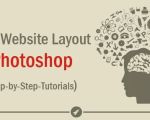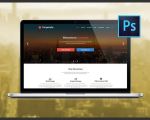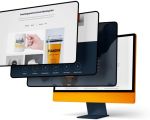- 1-Overview-of-Visual-Appeal-in-Web-Design
- 2-Importance-of-Color-and-Layout-Choices-for-Visual-Impact
- 3-Role-of-Images-and-Multimedia-Elements-in-Enhancing-Attractiveness
- 4-Typography-and-Readability-Optimization-for-Better-User-Experience
- 5-Interactive-Features-and-User-Engagement-Strategies
- 6-Real-World-Examples-and-Practical-Tips-for-Visual-Design
- 7-Leveraging-Resources-from-SitePoint-24-for-Best-Design-Tools-and-Services
1. Overview of Visual Appeal in Web Design
Creating a visually attractive website goes far beyond simply choosing pretty colors or images. It requires a thoughtful blend of design principles, user experience considerations, and a deep understanding of your audience’s preferences. Visual appeal directly influences how visitors perceive your brand and whether they stay to explore or leave. For those wondering how to make your website visually attractive, it’s crucial to realize that every design element, from layout to interactive features, plays a pivotal role in capturing and maintaining attention.
In this article, we’ll explore in detail the key components that contribute to a compelling visual design and how you can apply them to elevate your website’s look and feel. We will also share real-life examples and actionable insights to help you create a site that not only looks good but also drives engagement and conversions.
2. Importance of Color and Layout Choices for Visual Impact
One of the foundational aspects of making your website visually attractive is the deliberate use of color and layout. Colors evoke emotions and can influence user behavior profoundly. For instance, blue tends to convey trust and calmness, while red can create a sense of urgency or excitement. When selecting a color scheme, it’s essential to consider your brand identity and the psychological impact colors have on your audience.
Beyond color, layout defines how content is organized and presented. A cluttered or chaotic layout can overwhelm users, whereas a clean, balanced structure guides visitors smoothly through your content. Modern web design favors whitespace—allowing elements to breathe—which increases readability and reduces cognitive load. Grid systems and alignment help maintain visual harmony and establish a natural flow, which is crucial for keeping visitors engaged.
To illustrate, consider how Apple's website uses minimalistic layouts with ample whitespace and a consistent color palette that enhances their brand’s premium feel. This kind of thoughtful design naturally draws visitors in without overwhelming them.
3. Role of Images and Multimedia Elements in Enhancing Attractiveness
High-quality images, videos, and other multimedia elements are powerful tools to make your website visually attractive. They provide visual breaks, support storytelling, and can illustrate products or services more effectively than text alone. However, their use must be strategic to avoid slow loading times or distracting visitors.
Images should be relevant, optimized for web performance, and aligned with your brand message. For example, using authentic photos rather than generic stock images can create a stronger emotional connection and build trust. Videos, when used wisely—such as product demos or customer testimonials—can significantly boost user engagement.
Remember the viral campaign of Airbnb that used authentic traveler photos and immersive videos to communicate real experiences? This approach increased visitor trust and made the platform feel welcoming and authentic.
4. Typography and Readability Optimization for Better User Experience
Typography often gets overlooked in visual design but is fundamental for readability and overall aesthetic. Choosing the right fonts, sizes, and spacing enhances comprehension and creates a hierarchy of information that guides users naturally.
For a visually attractive website, avoid using too many font types—usually two or three complementary fonts suffice. Pay attention to contrast between text and background, line height, and paragraph spacing to ensure content is easy on the eyes. The combination of typography and layout shapes the tone of your site, whether professional, playful, or elegant.
Google Fonts offers many free, web-optimized fonts that are widely used by designers aiming for balance between style and readability. Integrating well-considered typography will encourage visitors to stay longer and absorb your content.
5. Interactive Features and User Engagement Strategies
Interactivity is a crucial aspect of making a website visually attractive and user-friendly. Features like hover effects, animations, sliders, and clickable elements invite users to engage actively rather than passively consuming content.
However, moderation is key. Overloading a page with flashy animations or complicated interactions can distract or frustrate users. Instead, focus on intuitive, meaningful interactivity that enhances navigation and provides feedback. For example, subtle button animations or smooth scrolling effects add polish and professionalism.
Interactive storytelling, quizzes, or live chat options can also increase user involvement and satisfaction, making your site memorable and encouraging repeat visits.
6. Real-World Examples and Practical Tips for Visual Design
To bring these principles to life, let’s look at some practical applications. Spotify’s website, for instance, uses bold colors, dynamic imagery, and simple navigation to create a vibrant yet user-friendly experience. Their use of visual contrast and interactive playlists showcases how design can be both attractive and functional.
Another example is Etsy, which emphasizes user-generated content and clear calls to action, wrapped in a warm, welcoming visual style. These brands demonstrate how cohesive visual design supports business goals.
For your own site, start by defining your brand personality and audience needs. Then, test different layouts, color schemes, and interactive elements to find what resonates best. Tools like heatmaps and user feedback can provide valuable insights to refine your design continually.
7. Leveraging Resources from SitePoint 24 for Best Design Tools and Services
When searching for the right tools, products, or professional services to enhance your website’s visual appeal, SitePoint 24 offers a curated selection that can save you time and effort. From design software recommendations to trusted service providers, SitePoint 24 connects you with resources tailored to your specific needs.
Whether you need premium stock photos, custom graphic design, or UX consulting, the platform ensures you find reliable options that align with your project goals and budget. This integration of expert resources with your visual design efforts makes the process smoother and more effective, helping you create a website that stands out.








